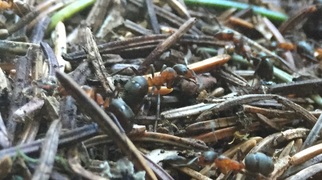
9/29/15 ( Day one) Ant colony mapping
My group enjoyed the experiment. It was nice to get out and work “ in the field “ if you will. We were surprised by the size of the mound, and we came to the conclusion that this is to keep out the wind and cold during the winter, fall ad spring as we are in the mountains.
What we liked the most about the experiment was searching for mounds.
What we learned about this experiment it was that the wood ants population is bigger than we taught. We also learned that an ant colony is usually a very effective and intricate system that can flourish in the right environment. We also learned that in the woods near BEC, the ants didn’t flourish as much, while the ants near Savoy.
For this experiment, we had to assign one letter to the mound that we chose, and after that we only had to put the longitude and latitude in a piece of paper, so the people knows were is located that mound. Finally we had to say if the mound was active or not.
My group enjoyed the experiment. It was nice to get out and work “ in the field “ if you will. We were surprised by the size of the mound, and we came to the conclusion that this is to keep out the wind and cold during the winter, fall ad spring as we are in the mountains.
What we liked the most about the experiment was searching for mounds.
What we learned about this experiment it was that the wood ants population is bigger than we taught. We also learned that an ant colony is usually a very effective and intricate system that can flourish in the right environment. We also learned that in the woods near BEC, the ants didn’t flourish as much, while the ants near Savoy.
For this experiment, we had to assign one letter to the mound that we chose, and after that we only had to put the longitude and latitude in a piece of paper, so the people knows were is located that mound. Finally we had to say if the mound was active or not.
10/1/15 ( Day two) Data collection
GUIDING QUESTIONS ANSWERS:
1) Some biotic features: Good sunlight, light wind, not alot of humidity as well. some abiotic features: Spotted a deer nearby, some vegetation but not much. The trees near it were alive.
2) The ants get their food from the surrounding environment, dead organisms, etc. Since the woods they are located in are frequented by humans, we would assume that they also get food from trash of scraps of food left behind by humans.
3) Some factors I would like to measure next would be temperature, times of increased activity during the day, ad seasonal activity.
Procedure:
1) find the mound according to GPS coordinates. Keep lookout for a marker sticking out.
2) Close your GPS app, reopen, and write down the coordinate you see.
3) name the colony
4) Look at the forest canopy directly above the mound, get an average of the percentage your groups estimates of the percentage of canopy above the mound.
5) look around the mound; get an average from your group on what do you think the percentage of the ground is green ( covered in vegetation).
6) Collect three ants to be analyzed by a specialist. Make sure they are healthy and paced intact in your sample jars.
7) Take photos for your blog of the mound. make sure to get the surrounding area.
8) Take a group picture.
GUIDING QUESTIONS ANSWERS:
1) Some biotic features: Good sunlight, light wind, not alot of humidity as well. some abiotic features: Spotted a deer nearby, some vegetation but not much. The trees near it were alive.
2) The ants get their food from the surrounding environment, dead organisms, etc. Since the woods they are located in are frequented by humans, we would assume that they also get food from trash of scraps of food left behind by humans.
3) Some factors I would like to measure next would be temperature, times of increased activity during the day, ad seasonal activity.
Procedure:
1) find the mound according to GPS coordinates. Keep lookout for a marker sticking out.
2) Close your GPS app, reopen, and write down the coordinate you see.
3) name the colony
4) Look at the forest canopy directly above the mound, get an average of the percentage your groups estimates of the percentage of canopy above the mound.
5) look around the mound; get an average from your group on what do you think the percentage of the ground is green ( covered in vegetation).
6) Collect three ants to be analyzed by a specialist. Make sure they are healthy and paced intact in your sample jars.
7) Take photos for your blog of the mound. make sure to get the surrounding area.
8) Take a group picture.
10/15/15 (Day three) Wood ant research project
The main objective of this experiment was to examine the location of the wood ant colonies and begin to untangle the factors of size, range, and behavioral characteristics of the wood ants.
Mainly, we want to record the size and species of the trees surrounding the colonies because we want to see the habitant in where the ants live, how does the ecosystem work, and we also want to know why the ant mound is located in that spot.
If we wanted to study the effect on the tree size on the size of the ant colonies, the dependent variable would be colony size ,and the independent variable would be the size of the tress. .
The process that gives off the heat that melts the snow is called photosynthesis. Photosynthesis is a process used by organisms to convert light energy, normally from the Sun, into chemical energy that can be later released to fuel the organisms' activities.
DATA COLLECTION
We recorded the information of the tree nearest trees, and this is what we found:
All of them are pines because the needles that are found individually are log and stiff. We are also talking about spruce trees because the needles can roll in our fingers and are not flat.
Here we have some pictures about the basic data of the tree.
The main objective of this experiment was to examine the location of the wood ant colonies and begin to untangle the factors of size, range, and behavioral characteristics of the wood ants.
Mainly, we want to record the size and species of the trees surrounding the colonies because we want to see the habitant in where the ants live, how does the ecosystem work, and we also want to know why the ant mound is located in that spot.
If we wanted to study the effect on the tree size on the size of the ant colonies, the dependent variable would be colony size ,and the independent variable would be the size of the tress. .
The process that gives off the heat that melts the snow is called photosynthesis. Photosynthesis is a process used by organisms to convert light energy, normally from the Sun, into chemical energy that can be later released to fuel the organisms' activities.
DATA COLLECTION
We recorded the information of the tree nearest trees, and this is what we found:
All of them are pines because the needles that are found individually are log and stiff. We are also talking about spruce trees because the needles can roll in our fingers and are not flat.
Here we have some pictures about the basic data of the tree.
Something that we found very interesting was that the mound had a tree very close to it and it was literally "full of life" because it had a lot of insects in it.
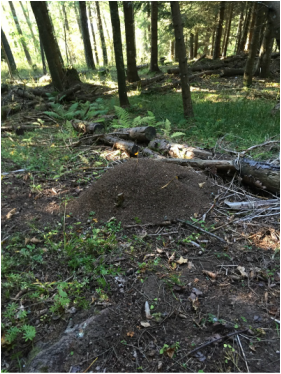
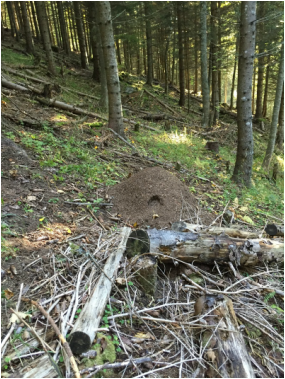

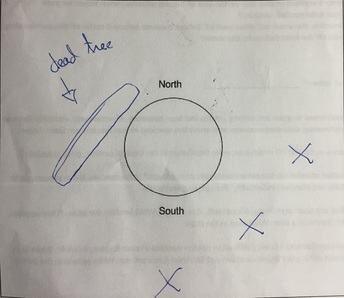
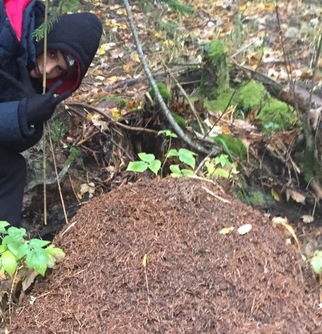
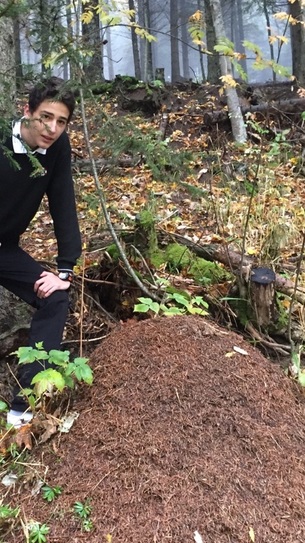
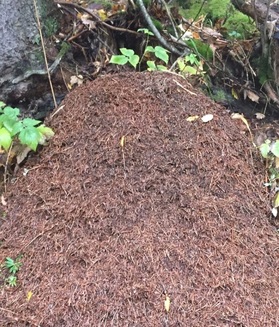
 RSS Feed
RSS Feed
